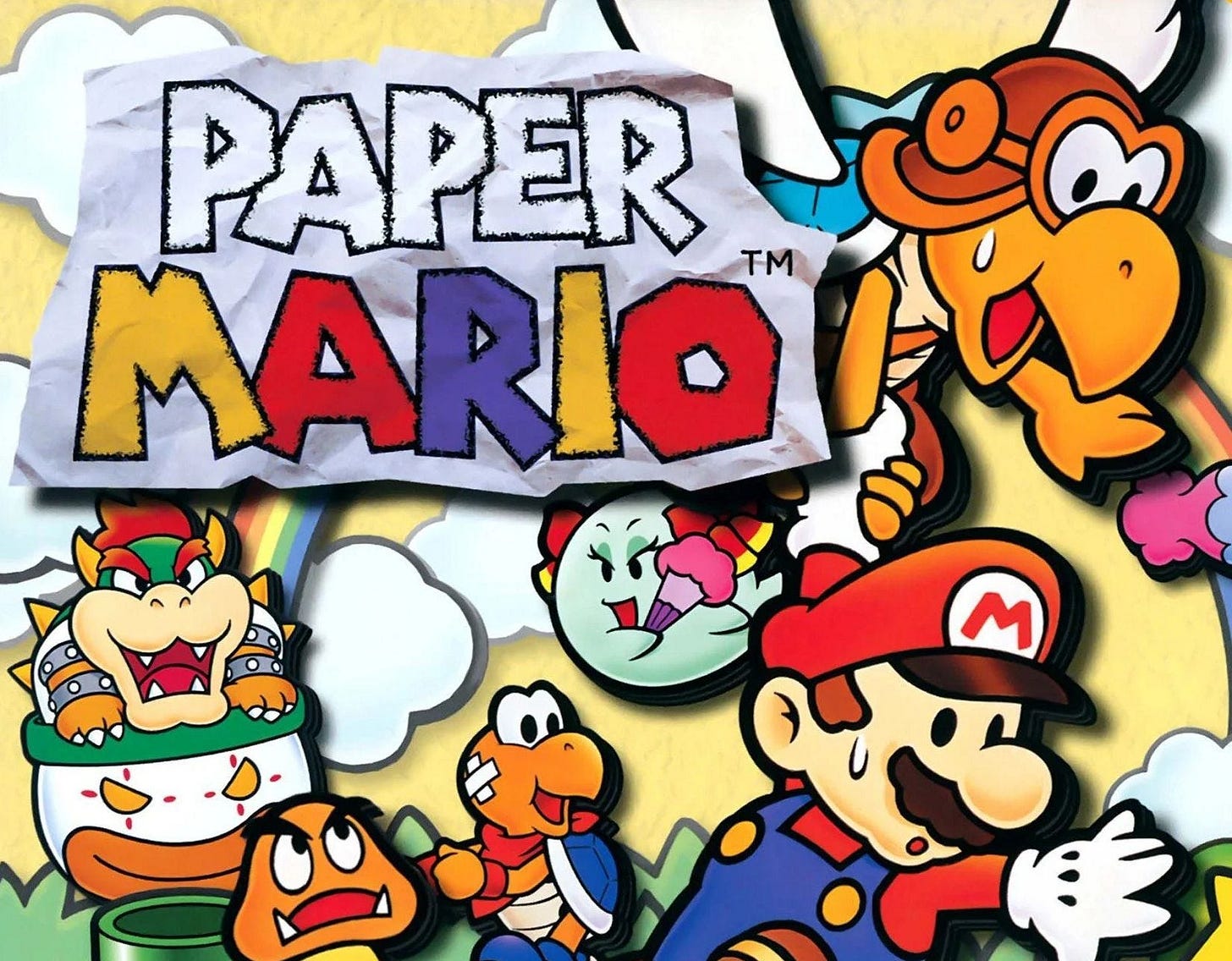What Paper Mario can teach you about balancing in RPGs
A year or two ago, I played a quite enjoyable game called Grand Guilds. Supposedly made by a solo/small team (or is it?). It's a fun J-RPG wannabe that would deserve the title of the best jankiest JRPG ever!
I don't regret playing it!
It had interesting characters, which were not very tropey (at least half of them), and had a great anime appeal. The character design was enough for me to buy it! And the story was as enjoyable. If only there were a sequel...
But a game made by a small team had to have its problems, especially if it wants to be an RPG. At some point, I restarted the game because my team build was not the best choice for ONE boss battle. Grinding is not possible. Not to mention some battlegrounds achieved solid 10 FPS only because a town was on fire or something. Unreal Engine and Nintendo Switch were not really working together here.
But what I want to highlight is that the game failed at balancing, and that’s the only thing I want to point out. It’s a lesson in game design, especially for solo gamedevs wanting to tackle RPGs1.
Until recently, I had no idea how to tackle it.
***
A year or two later, I'm playing a "definitely not a game made by one developer" called Paper Mario2. You might've heard of it ;-)
And it suddenly struck me… this game has great conclusions on how to design a J-RPG. Minus the story, because seriously, it's a Mario game.
If you're used to J-RPGs, this game will sound basic to you, but frankly, I consider it to be the essence of a turn-based RPG game.
Here are some things I noticed while playing it.
The quiet and terrorizing pressure of small numbers
I used to be bored by big numbers in J-RPGs. By the end of some games, the hit points go OVER 9000! (usually higher).
But in Paper Mario, you start by dealing 1 damage point.
And by the end of the game, you'll deal maybe 10.
At the beginning, you can count your hit points on both hands.
But man, were these battles tense! Enemies with 3 HP, my punches for 1 HP... Imagine how you feel when you notice that an enemy can kill you with 3 to 4 punches!
Then again… Maybe because the game uses small numbers, there are fewer situations to tweak the balance?
My ideal RPG would have no numbers whatsoever3, so watching Paper Mario handling this was very interesting.
How do you grind? You don't!
Once you achieve a certain milestone (end of chapter, I think), you cannot return to weaker enemies and gain experience by beating them. You can take away their money, but they don't offer you experience points. Good thing you level up every 100 points (and it’s still a challenge!), so at least you don't have to run around in some sort of Fibonacci scheme just to get some boosts ;-)
But the progression is still interesting
For each 100 points collected, you can pick whether you want to raise your HP by 5 points, raise your Flower Points (aka mana) by 5 points, or raise your Badge Points by 3.
The first two are self-explanatory. Badges give you skills or other traits that can be used in battle (like bigger luck to avoid punches, additional attack skills, or just a badge that gives you +5 to HP), but they also cost Badge Points. The more badge points you have, the more badges you can wear.
Badge costs vary, but they give your combat a little diversity, so to speak.
Skills require FP as fuel, and you require HP to survive the battles, so the decision is yours: what do you need to invest in at the moment? Because you don't want to invest in one thing, that would be suicidal, as every RPG fan would tell you.
As a player, I’m rather used to skill trees. Here, I can re-adjust anything without going through branches, which is your typical Nintendo simplicity in design.
Team members give you skills, sometimes subquests
Although your Fellowship of the Mushroom will have multiple characters, you can have only one of them in battle and following you around.
Each of them gives you skills needed both in overworld and in battle. One of them even gives you a never-ending subquest about delivering mail. But most of them are required to go further in the game, because you need their skills to go over obstacles.
They don’t have any hitpoints themselves, although they can lose a turn. They’re sharing your Flower Points. But why only one companion? Would adding more than one character to the team be a problem in balancing? Probably! Too many skills to choose from, battles too easy, skills making life too easy. One is the best number of companions in this case (although it works in many RPGs to have bigger teams, hence I assume this is a precaution taken to not break the rest of the game design).
Here is a brief breakdown on what Paper Mario can teach us about balancing RPGs, making it Nintendo-simple! When in doubt, simplify or even throw out ;-)
Although I heard they make even less RPGey decisions later… Maybe I should check that out…
It was also a lesson in how to write a story, as this guy did it better than many studios anyway…
played on Nintendo Switch Online + Expansion Pack
Here’s a topic for discussion for later. Is an RPG without numbers still an RPG? What makes Betrayal in Krondor or Disco Elysium still an RPG?



